Key points about outer ear infections in children
- outer ear infections are infections of the skin inside the ear canal or around the outer ear
- outer ear infections are common in tamariki (children) and rangatahi (young people)
- they can happen if water gets trapped in the ear canal
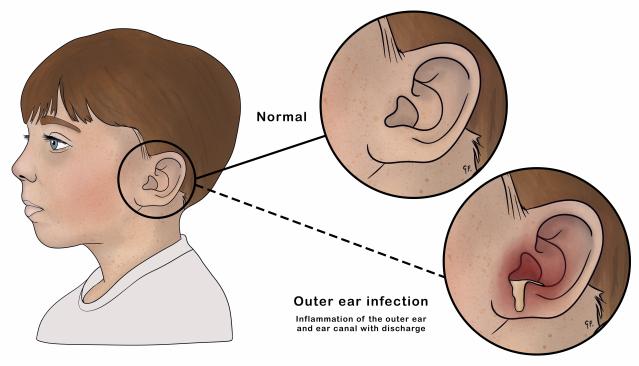
What is an outer ear infection?
An outer ear infection, also known as swimmer's ear or otitis externa, is an infection or inflammation of the outer ear canal. The ear canal is the tube that connects the outer ear to the eardrum.
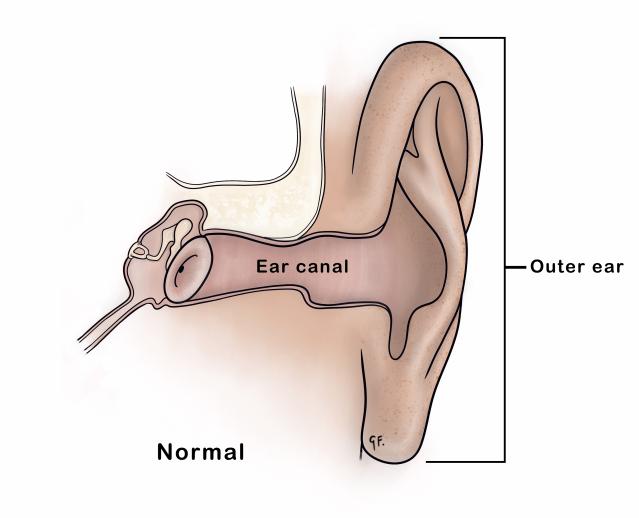
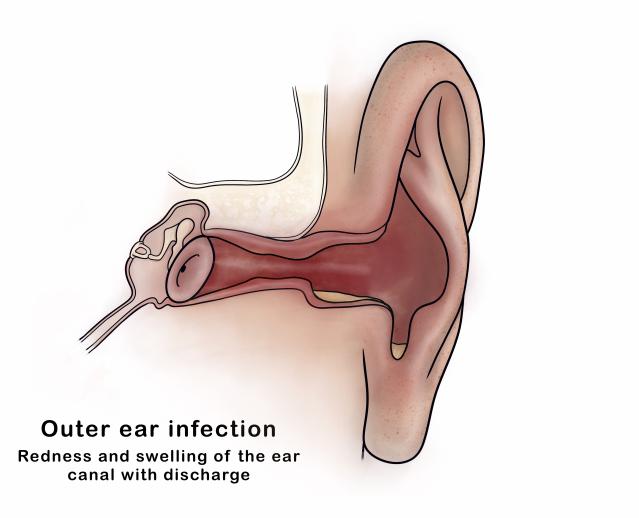
Causes of outer ear infections
A common cause of outer ear infections is water trapped in the ear canal. This can happen after swimming or after baths or showers. Trapped water creates an environment for bacteria or fungi to grow.
Other causes include:
- trauma to the ear canal from things like cotton buds or fingernails
- infection spreading from the inner ear to the ear canal
- objects like little toys and beads getting stuck in the ear
Symptoms of an outer ear infection
Symptoms of an outer ear infection can include:
- pain in the ear
- itchiness in and around the ear
- the ear feeling blocked or full
- coloured discharge from the ear
For some tamariki, an outer ear infection can be very painful. The outer ear can become red and swollen.
Rarely, tamariki may have reduced hearing when they have an outer ear infection.
Who gets outer ear infections?
Outer ear infections are most common in tamariki and rangatahi who spend a lot of time swimming or in water.
Other things that can make tamariki more likely to get outer ear infections include:
- narrow ear canals
- lots of ear wax
- skin conditions such as eczema
How an outer ear infection is different from other ear infections
There are 3 parts to the ear:
- the outer ear
- the middle ear
- the inner ear
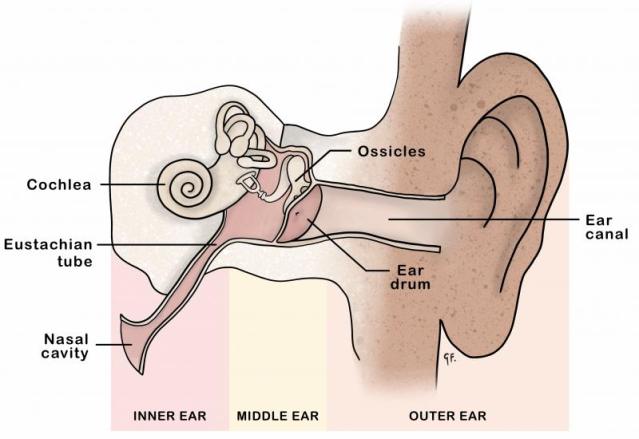
An outer ear infection affects the outer ear, which includes the ear canal and the part of the ear you can see.
A middle ear infection, also known as otitis media, is an infection behind the ear drum. Middle ear infections are common with colds.
See the page on ear infections to learn more about middle ear infections.
Diagnosing an outer ear infection
If you think your child may have an ear infection, take them to a health professional.
A health professional can diagnose an outer ear infection by looking inside your child’s ear canal with an otoscope. An otoscope is a small, powerful light with a magnifying lens. They will also look at the outside of your child’s ear for signs of infection.
Holding your child while they get their ears checked
Many tamariki do not like having their ears examined. To make it easier, the health professional may encourage you to comfort your child by:
- holding your child sitting sideways on your lap
- hugging their arms firmly with one of your arms
- holding their head firmly against your chest with your other arm
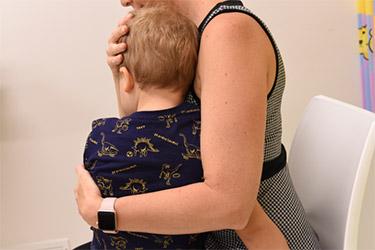
Managing an outer ear infection
Ear drops
A health professional may prescribe ear drops for your child for a mild outer ear infection. These eardrops usually have antibiotic and steroid medicine in them. This helps to kill the infection and reduce the inflammation. Some ear drops also have an antifungal medicine that can treat fungal infections.
Your child may need ear drops for several days. Make sure they finish the total amount.
A health professional may prescribe oral antibiotics for more severe or ongoing infections.
Gentle cleaning
Your child’s ear may need to be gently cleaned out. Your health professional may do this or they may refer you to a specialist ear clinic.
Pain relief
If your child has discomfort, you can give paracetamol to make them more comfortable. You must follow the dosage instructions on the bottle or packet. It is dangerous to give more than the recommended dose.
Caring for your child with an outer ear infection at home
Ear drops
The health professional will talk you through how to give your child the ear drops. If possible, your child will need to lie on their side and wait for around 3 minutes after you have put the ear drops in the ear canal. This stops the ear drop medicine from draining back out of the ear when your child moves around again.
Avoid touching the ear
While your child has an outer ear infection, encourage them not to touch or scratch their ear.
Keep the ear dry
Keep your child’s ear dry for at least 14 days after an outer ear infection. Cover their ears with a shower cap in the bath or shower. Your child shouldn’t swim until their ear infection is completely better.
When to get urgent medical help for your child
Take your child to a health professional urgently if:
- they have swelling in or around their ear
- they have severe pain or pain that isn’t getting better
- their ear has changed colour
- they seem to have trouble hearing
- they have discharge or blood coming from the ear
- they are unwell with fever or vomiting
Possible complications from an outer ear infection
Most tamariki with outer ear infections get completely better.
Some tamariki may develop a recurrent or chronic outer ear infection. Recurrent outer ear infections can cause the ear canal to narrow. This narrowing is due to scar tissue forming.
Rarely, an outer ear infection can spread if the infection isn’t treated or if someone has reduced immunity. It may spread to the bones and cartilage behind the ear at the base of the skull.
Preventing outer ear infections
Wearing a good swimming cap or swimming earplugs when swimming can help. Make sure your child dries their ears well after swimming or showering.
For tamariki who are prone to outer ear infections, a health professional may recommend using drying ear drops after swimming or bathing.
Do you need to clear ear wax out of your child’s ears?
Ear wax doesn’t need to be cleaned or removed from your child’s ears. The ears are self-cleaning. If there are large clumps of wax you can see at the opening of the ear, you can gently remove these, but never use earbuds to clean your child’s ears.
If you’re worried that ear wax is a problem for your child, talk to your health professional. They may suggest ear drops to help soften the ear wax.
Make sure your child doesn’t put anything in their ear, such as cotton buds.
Acknowledgements
Illustrations by Dr Greta File. Property of KidsHealth.
